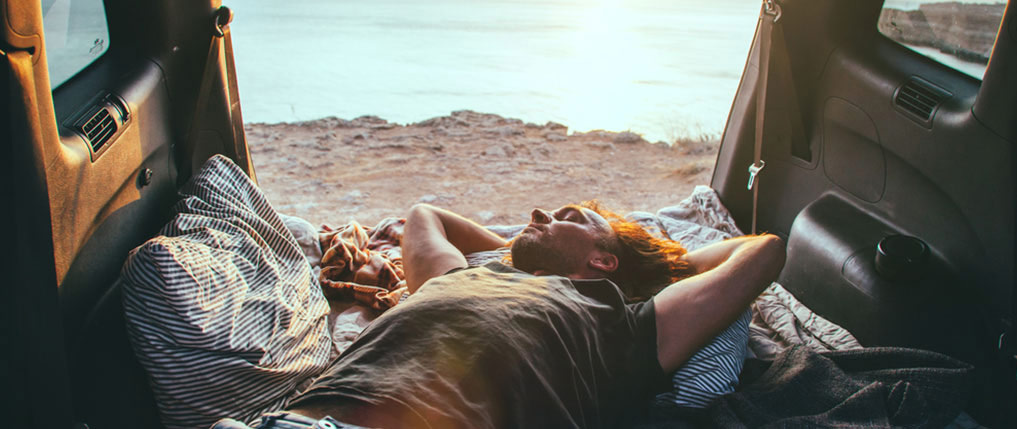6 Tips for Successful Car Camping
May 30, 2020

Who needs a tent when you’ve got a roomy hatch, truck bed or backseat? Car camping comes in many forms. Depending on your preferences, budget and needs, you might want to try a sleeping bag in the hatch, a conversion van or a car-camping tent for your next overnight adventure. Either way, all of these options provide the same minimalist camping experience and the same opportunity for limitless roaming.
When you’re camping in your vehicle, you have far fewer challenges and much less gear to consider. You also don’t have to worry about a challenging RV or trailer to park. But that doesn’t mean you should go into the situation blindly. Here are a few of the best tips for safe and successful car camping.
1. Do It Legally —You’re camping in a car, so a parking lot is just fine, right? Wrong! The safer, more compliant alternative is to pony up for a proper campsite. If you do decide to camp out in a parking lot, make sure to always get permission from the owner or manager. Dispersed camping in public parklands is another safe alternative that’s perfectly legal but provides you with the quiet serenity you desire. Just make sure to find designated dispersed campsites that are legal.
2. Pack Portable Lighting —As tempting as it may be, you don’t want to rely on your car’s battery for lights or charging your devices. Keeping the interior or exterior lights on is a quick way to drain the battery and risk getting stranded (side note: always pack jumper cables, just in case). A simpler solution is to hang a headlamp from the handles and hooks in your backseat. Just make sure to use lights with long-lasting LEDs and pack backup batteries. We also recommend investing in a portable solar charger so you can power up your phone and camera without straining your car battery or wasting gas.
3. Pack a Small Cooler —If it’s just you or you and another person, you should be able to get away with packing a minimally-filled cooler. Keep the cooler compact so you can stash it in the passenger seat while you sleep. Bone up on how to pack a cooler properly so your food and beverages stay ice-cold and dry all night. If you’re in an area with bears or other hungry predators, be sure to pack your cooler and bring it in your car with you before you go to bed.

4. Stock Up on the Basics —When camping anywhere, there should always be a careful balance between stocking up and keeping things lean. This is especially true when your only storage space is your car. Just make sure you have a large enough supply of the basics, including food, water and emergency supplies. Also, make sure to fill up your gas tank if you’re heading far off the grid.
5. Use a Sleeping Pad —The carpeted floor in your car is arguably more comfortable than the ground outside. Even if it’s no more cushioned, it’s definitely drier and warmer. Still, car floors and truck beds tend to be hard. To avoid tossing and turning all night, invest in a sleeping pad and then layer your sleeping bag on top. A cheap roll of memory foam or egg crate foam would work too!
6. Pack a Car Emergency Kit —In this case, your vehicle is your primary means of shelter and transportation, so it’s crucial to keep it in good shape. You can create a DIY car emergency kit relatively easily. Make sure to include flares, jumper cables, an emergency blanket, matches, a fire starter and some basic tools. Be sure to pack your emergency kit in a watertight, hard-sided case to keep everything protected.
Car camping is a convenient, affordable way to sleep off the grid, but it comes with some special considerations. You want to make sure you prepare properly and choose a safe spot to park. With minimal cargo, minimal distractions and the ability to roam as you please, this is one method of camping that’ll definitely live up to your expectations.

SIGN UP FOR EXCLUSIVE OFFERS
Sign up for our newsletter and get exclusive access to new product launches, special offers and much more.
RELATED BLOGS